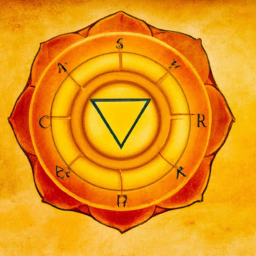The Second Chakra: Understanding the Vital Organs Associated With It
The second chakra, also known as the sacral chakra or Svadhisthana in Sanskrit, is the second energy center in the body according to Hindu and Buddhist traditions. It is located in the lower abdomen, just below the navel and above the pubic bone, and is often referred to as the “creativity and pleasure” chakra.
But what many people don’t know is that the second chakra is also associated with a specific set of organs in the body. These organs play a vital role in maintaining the balance and flow of energy in this chakra, and any imbalance or dysfunction in these organs can have an impact on our physical, emotional, and spiritual well-being. Let’s dive into the details of these important organs and understand their connection to the second chakra.
The Reproductive Organs
One of the main organs associated with the second chakra is the reproductive organs. This includes the ovaries in women and the testes in men. These organs are responsible for the production of hormones that regulate the reproductive system and play a crucial role in fertility and sexual health. They also play a significant role in the creative process, as they are responsible for the creation of new life. Any issues or imbalances in these organs can affect our reproductive health, sexual desires, and overall vitality.
The Urinary System
Another set of organs closely connected to the second chakra is the urinary system, which consists of the kidneys, bladder, and ureters. The kidneys are responsible for filtering waste from the blood and regulating the body’s fluid and electrolyte balance. The bladder stores urine until it is released through the ureters. The second chakra’s energy is closely linked to the flow of fluids in the body, and any disruption or blockage in the urinary system can manifest as emotional blocks, energy imbalances, or physical issues in the sacral region.
The Digestive Organs
The organs involved in the digestive system, such as the stomach, small intestine, and large intestine, are also associated with the second chakra. The digestive system is responsible for breaking down food into essential nutrients that nourish our bodies. Our emotions and energy are closely linked to what we eat, and any digestive issues, such as bloating, constipation, or diarrhea, can indicate an imbalance in the second chakra.
The Adrenal Glands
The adrenal glands, located on top of the kidneys, are responsible for producing hormones that regulate our response to stress, control blood pressure, and affect metabolism. These glands are closely linked to the second chakra’s energy, as stress and emotions can have a significant impact on the sacral region. An over or underactive adrenal gland can result in an imbalance in the second chakra and manifest as issues such as anxiety, fatigue, or adrenal fatigue.
The Role of Yoga and Meditation
Yoga and meditation can be powerful tools for balancing and harmonizing the second chakra and its associated organs. Specific yoga poses, such as pigeon pose, cobra pose, or seated forward bend, can help release tension in the sacral region and stimulate the flow of energy. Meditation, with a focus on the sacral chakra, can help balance emotions, increase creativity, and connect with our bodies.
In conclusion, the second chakra is a crucial energy center that is closely related to various organs in the body. Maintaining a healthy balance in these organs is essential for the overall well-being of an individual. By understanding the connection between the second chakra and these organs, we can become more aware of our body’s signals and take appropriate measures to support these vital organs. So let’s take care of our bodies and nurture our second chakra for a healthier, happier and more fulfilling life.





The second chakra governs the organs associated with reproduction, sexual energy, and feelings of self worth.
#Fascinating! This so important for us to understand and take care of ourselves in these areas.